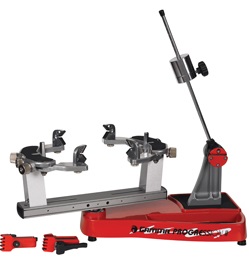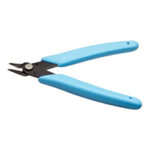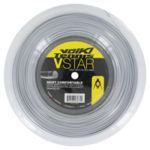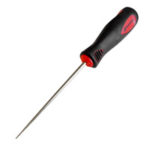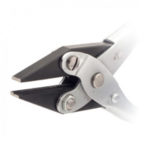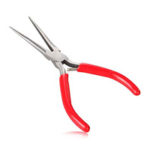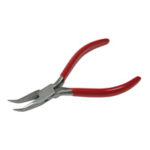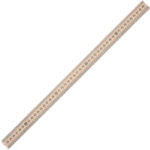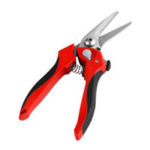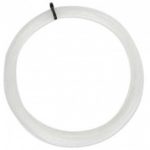Best Tennis Stringing Machine of 2022: A Complete Guide
In order to string a racquet, a tennis stringing machine will be necessary. But what kind of tennis stringing machine should you get? Well, this can depend. These days, stringing machines can come with a ton of features, but what you’ll want should be based on what your needs are. Are you going to need it for personal use or for your tennis shop? Are you going to use it very frequently (multiple times a week) or only as often as a pair of strings break? If you will be stringing a large number of racquets for customers frequently, it may be wise to spend a little more on a premium machine that offers more customization options and can save you time.
Finding the right tennis stringing machine can help you with everything, from the way you’ll be able to customize your racquet to the money you’ll save by stringing racquets yourself or the positive impact it can have on your business. A good stringing machine can be a good investment, and that’s why today we’ll be going over the different factors you should consider in the selection process as well as comparing some of the top rated tennis stringing machines available.
Best Tennis Stringing Machine of 2022: A Complete Guide
Factors to Consider
Price
How much are you willing to spend? If you are going to use your tennis stringing machine for personal use (whenever your strings break), it doesn’t make much sense to spend an exorbitant amount of money on a machine. However, if your stringing machine is going to be an important part of your business, it would make sense to spend more on a professional machine with extra customization options that can save you additional time. So, we suggest you buy a high quality machine that a). fits your budget and b). offers enough features to meet your needs. Most basic models start around the $200 range while deluxe machines can cost upwards of $2,000.
Table Top or Standalone?
Are you going to want to transport your machine around the house or would you rather prefer it in an upright position? If you want a machine you can move, you’re going to want a table top version. A table top machine offers the convenience of portability and can be used on any stable surface (e.g. table, desk, etc.). On the other hand, a standalone tennis stringing machine is a sturdier model that stands on its own, strings a little faster, feels more comfortable since it allows you to stand, and often comes with advanced features (recommended for professional use). However, standalone models are more expensive.
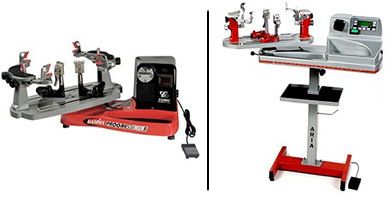
Tension Options
The tension option you choose will be a very important factor to consider since it can determine how much effort it’ll take to string a racquet. The difference between tension options is how the tennis stringing machine is able to keep the tension of the strings, and options that allow for easier stringing often cost more. There are three options to choose from: drop weight, manual (also known as spring, crank, or lockout), and electronic.
Drop weight models use a rod to determine the string’s tension, with a movable weight on the end that can be adjusted to different tensions on a scale. Moving the weight farther outward results in a higher string tension, while farther inward leads to a lower string tension. Once the tension of a string is specified, it is clamped off and the process is repeated for the next string. Drop weight machines are often the slowest to string racquets with and can have limited tension accuracy, although they are the least expensive and require little maintenance. Most basic stringing machines will be drop weight.
A manual tennis stringing machine is also known as a spring head, crank, or lockout machine. This type of machine uses a special crank with a pre-loaded spring to achieve the right tension. Once the tension has been specified, a brake/locking mechanism is engaged to keep the string tension. The string being tensioned is then clamped, and the lock is disengaged when it’s time to tension the next string. Manual stringing machines are affordable and offer higher tension accuracy than a drop weight tennis stringing machine, although they require more physical effort than any other machine.
Electronic models use a computer-directed motor or microprocessor to tension the string, and either comes in a constant pull or lockout version. They are extremely easy to use, and just requires the push of a button to tension strings. The lockout electronic model works exactly like the manual crank, where the string is pulled through a preloaded reference spring until the correct tension is reached. The only difference is that you have an electric motor that does the cranking for you (which is why we don’t recommend it). But it does not measure the tension over time so the process must be repeated for each new string. The constant pull electronic model, however, monitors the tension of the strings throughout the stringing, and adjusts the tension of the string accordingly if there are any changes in tension. This makes it the most accurate and fastest tennis stringing machine, although they cost the most.
| Drop Weight | Manual | Electronic | ||||||||||||
|
|
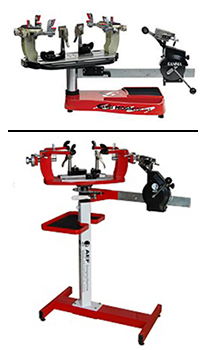 |
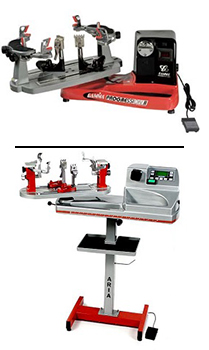 |
||||||||||||
|
|
|
Mounting System
A tennis stringing machine will either come in a 2, 4, or 6-point mounting system. This basically refers to the number of points that come into contact with the racquet’s frame to secure it in place. 2 and 4-point machines hold a frame only at the throat and head, which makes it quicker and more convenient. However, the less supports there are, the more a racquet’s frame is distorted. Since the stringing process adds a lot of stress to the racquet frame, this can be a potential problem for oversize racquets. Not that there’s anything wrong with a 2-point system, which is often found on most basic models, but if you’re looking for something more secure with added stability, a 4 or 6-point system will meet your needs. Extra features can include plastic or rubber surfaces to protect the finish and mounts that can be adjusted.
Clamps
Clamps are what you’ll be using to hold a tensioned string in place. There are two major types of clamps: floating (or flying) clamps and fixed clamps (swivel or no swivel). Floating clamps are not attached to the machine, and requires using one string to hold the tension of another. These often come with basic stringing machines, and although they provide less tension consistency than fixed clamps, they don’t cost as much. Fixed clamps can either have swivel or no swivel. Fixed clamps that do not swivel glide on a bar system under the racquet in order to keep a string’s consistency and can be repositioned when changing from mains to crosses. Fixed clamps that swivel also glide on a bar system, but can rotate 360 degrees and are the easiest clamps to use, although they are the most expensive type and often come only a deluxe tennis stringing machine.
Warranty
Since most tennis stringing machines don’t come cheap, a warranty should be considered just in case anything goes wrong. You should contact the manufacturer or distributor to find out what they offer should something break. Some things to think about: nature of the warranty (repairs or replacement parts), what the turnaround time is, shipping costs, and the length of the warranty. Most machines should not have problems if you handle it correctly, so read the model’s instruction manual from front to back for proper usage. Oftentimes, manuals also include troubleshooting advice for common problems, which is another reason why you should acquaint yourself with it.
Our Top Picks
Gamma provides top-notch tennis stringing machines for all levels of stringers, and Gamma machines consistently receive some of the highest ratings. That’s why most of our top picks will be Gamma machines.
There are other great stringing machine brands out there, however, including Alpha, Prince, and Tourna.
***NOTE: There is no difference between the Gamma X vs the Gamma Progression stringing machines mentioned below, other than the fact that the Progression series (red) feature a tool tray while the X series (blue) does not. Other than that, they are the same and priced the same as well.***
Best Entry Level Tennis Stringing Machine
These entry level tennis stringing machines fit the budget of most newcomers who need a stringing machine but don’t want to break the bank and don’t string racquets very often. Perfect for moving around with ease and features the bare essentials. Our only gripes with machines like these are that since they are cost friendly, they only feature a 2-point mounting system which doesn’t provide the best support for the racquet frame. Also, drop weight tension takes longer to string.
| Model Name: | Stand: | Tension: | Mounts: | Clamps: | Rating: |
|---|---|---|---|---|---|
Gamma X-2 | Table top | Drop weight | 2-point | Floating clamps | 4.0 |
Gamma Progression II 200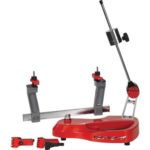 | Table top | Drop weight | 2-point | Floating clamps | 3.9 |
Klippermate®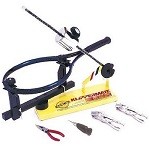 | Table top | Drop weight | 2-point | Floating clamps | 3.7 |
Best Mid-Range Tennis Stringing Machine
A bit more expensive than the machines mentioned above, these mid-range stringing machines offer a 6-point mounting system and fixed swivel clamps, which helps to keep the racquet frame more secure while the clamps make it easier to keep string tension. But again, drop weight tension means it will take longer to string than manual or electronic constant pull machines. But that shouldn’t be a problem if you’re only stringing your own racquets and the occasional one for friends and family.
| Model Name: | Stand: | Tension: | Mounts: | Clamps: | Rating: |
|---|---|---|---|---|---|
Gamma Progression II 602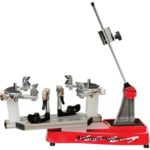 | Table top | Drop weight | 6-point | Fixed swivel clamps | 4.4 |
Gamma X-6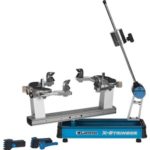 | Table top | Drop weight | 6-point | Fixed swivel clamps | 4.4 |
Alpha Pioneer DC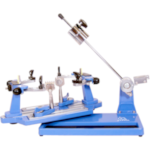 | Table top | Drop weight | 6-point | Fixed swivel clamps | 4.2 |
Best High-End Tennis Stringing Machines
Now we’re getting into the heftier machines. These tennis stringing machines are a serious investment, and best for those who are stringing often. Electronic constant pull machines are a life saver as they require minimal physical effort, but manual hand crank machines are quite easy as well and won’t cost nearly as much.
| Model Name: | Stand: | Tension: | Mounts: | Clamps: | Rating: |
|---|---|---|---|---|---|
Gamma Progression II ELS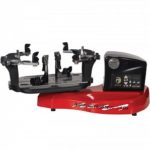 | Table top | Electronic constant pull | 6-point | Fixed swivel clamps | 5.0 |
Gamma XLT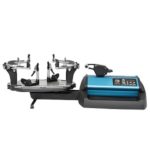 | Table top | Electronic constant pull | 6-point | Fixed swivel clamps | 5.0 |
Gamma Progression ST II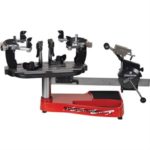 | Table top | Manual | 6-point | Fixed swivel clamps | 4.8 |
Gamma X-ST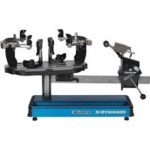 | Table top | Manual | 6-point | Fixed swivel clamps | 4.7 |
Alpha REVO 4000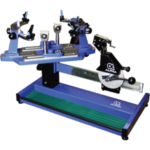 | Table top | Manual | 6-point | Fixed swivel clamps | 4.7 |
Best Professional Tennis Stringing Machine
Machines like these are what you’ll find in professional tennis shops and in homes of those who string racquets very, very often. Only the best of the best, the crème de la crème here, expect to fork out some serious dough. But the amount of time and effort you save will be worth it in the long run if you’re relying on a tennis stringing machine on a consistent basis.
| Model Name: | Stand: | Tension: | Mounts: | Clamps: |
|---|---|---|---|---|
Gamma 6900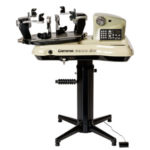 | Standalone | Electronic constant pull | 6-point | Fixed swivel clamps |
Gamma 7900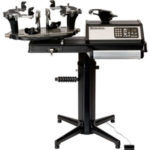 | Standalone | Electronic constant pull | 6-point | Fixed swivel clamps |
Alpha Ghost 2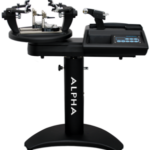 | Standalone | Electronic constant pull | 6-point | Fixed swivel clamps |
Tourna 800 ES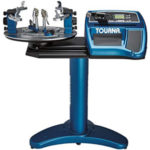 | Standalone | Electronic constant pull | 6-point | Fixed swivel clamps |
Essential Tennis Stringing Machine Tools/Accessories
| String bed cutter (optional) |
Nylon tubing (optional) |

